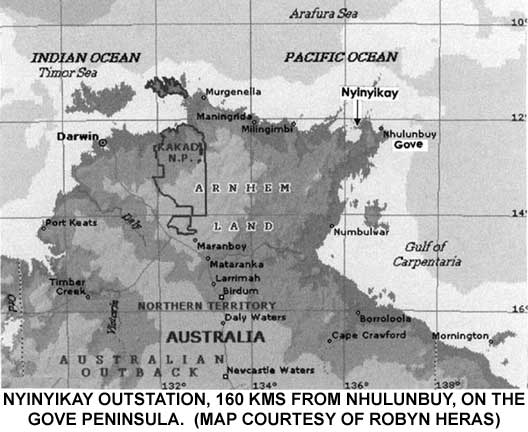
Visiting Arnhem Land at the top end of Australia would be seen as exotic, an adventure. It conjures images of the film, “Ten Canoes”. Arnhem Land is home to Yol|u people for thousands of years - people who have not lost their traditional culture and language. Not surprising to feel both trepidation and excitement when we met our hosts, Nancy Walmanydji Burarrwanga and the Ganambarrs who live in a family outstation called Nyinyikay, 160 kms from the nearest town, Nhulunbuy, on the Gove Peninsula. Little did we know that during our six-day stay with them, we - six Australian women from the south, would be adopted into their ancient kinship system and given Aboriginal names.
On the 9th of August 2006, Patti Nicholson and I flew from Sydney to Cairns and then to Nhulunbuy to check in at Gove Peninsula Hotel where we were to join the rest of the group: Sue Burnett, Sally-Anne Prado, Mary Rudd, and Philippa Cordwell, and our guides, Robyn and Pablo Heras. A pleasant surprise awaited us. Our Yol\u hosts, Nancy Walmanydji Burarrwanga, her daughter, Balatj Ganambarr with husband, Gary Baker, had come to meet us in town. We had a bowl of hot soup with the others and a yarn. Balatj suggested that we wear long skirts at Nyinyikay. Not only was this practical when sitting on the ground but also modest and an appropriate attire for women. And so we headed for a frock shop in town the next day to buy bright colourful long skirts. We also spent time at the Yirrkala Art Centre before boarding the chartered plane to Nyinyikay.
Upon disembarking from the single engine six seater plane, we immediately noticed the ‘Welcome to Nyinyikay’ red sign by the airstrip and then we walked on the stony reddish earth towards the sheltered ground where we were to pitch our tents. This shelter was facing the ocean and headland. Looking down, we thought the reddish brown ground looked like a cross-hatched painting but was really the criss-crossing trails of hermit crabs’ walkabout. From a distance, we saw two men approaching, carrying an esky full of fish. Pablo Heras and Rone Ganambarr brought us lunch, fresh from their morning catch.
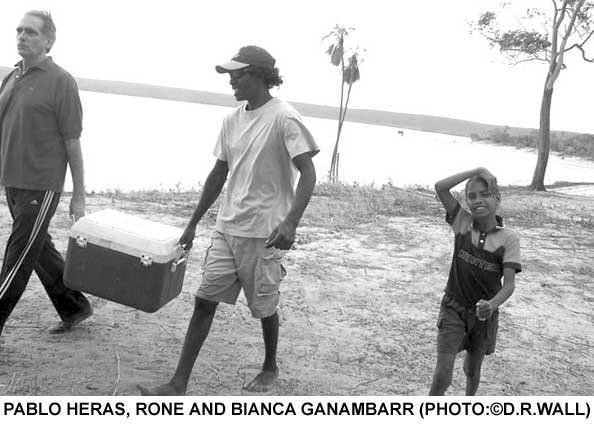
Six days went fast — like having a crash course about a culture thousands of years old. At the same time, we learnt to slow down, relax and adapt to the pace and rhythm of Nyinyikay lifestyle. The first lesson was sitting on the ground for hours while weaving pandanus baskets and having a yarn to get to know one another. We also learnt how to fashion sea shells into necklaces, bracelets and earrings. The process is: they collect miniature shellfish from the beaches, boil and pick them clean with pins. Then they clean and dry the shells thoroughly, pierce each shell with a pin and string them up. But that is not the toughest lesson for us.
The toughest lesson, after we were adopted and given Yol\u names, was understanding how we fitted into the kinship system - what moiety we belong to; who we can marry, if we were available; who is our sister, uncle, grandmother, and so on. Learning the words is one thing, knowing who we are related to is another. I discovered very quickly that what is more important than a person’s name is how we are related to that person. It is the kinship relationship that reveals what responsibility one has to each other.
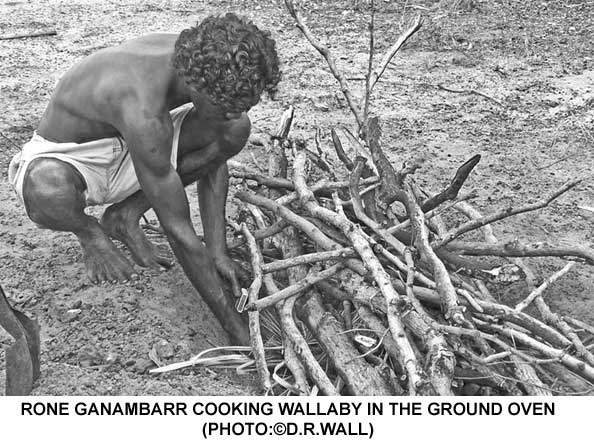
So how do I fit in? The name I was given is Ganguri, (wild yam) and I belong to the Dhuwa moiety. Mowarra Ganambarr, father of the family, is my brother and Walmanydji Burarrwanga, his wife, is my galay (sister-in-law). My brother’s children, some of whom I have met – Balatj, Gawura and Rone are my g^thu (that is, the children of my brother). The focus in calling each other not by name but by one’s relationship to the family kinship system is so that one knows one’s place, role and obligation to each other. Extending this to nature, one knows one’s relationship to the immediate environment. And so I find my g^thu, Balatj telling us how she knows when the tide is coming in or when it is going out while her mother Walmanydji during a walk in the bush, indicated to us which bush plant they use for eye drops. They certainly know how to read nature in a way that is baffling for outsiders.

Many of the Ganambarr family are artists such as Larrtjanga Ganambarr (born 1932), Merrkiyawuy Ganambarr (1959), Mavis Warrngilna Ganambarr (1966) and Ngongu Ganambarr (1967). In a way, they seem to live their art and craft. Little wonder that the subject of their art is often about their kinship, their sacred Law and objects. There is no separation between their art and identity.
Their dances are movements found in their natural environment – sting rays, sharks, sway of branches. They are short, focused, graceful and rhythmical. Not so easy for me to emulate. I find their movements meditative and flowing. Learning their dance is like learning to disappear in the dance, to be one with nature itself. Their calm disposition, their patience as teachers, their humour and accepting nature are impressive traits and a contrast for city people like us who are often caught up in a whirlpool of activities.
We are now part of ‘the family’. It all started when Robyn and Pablo Heras were adopted into the clan ten years ago. With a small party which included Aboriginal people, they visited North East Arnhem Land. A subsequent visit to different outstations included Nyinyikay. Soon they developed a close relationship with the Ganambarrs at Nyinyikay. The rest is history. They now visit the family every year during the dry season.
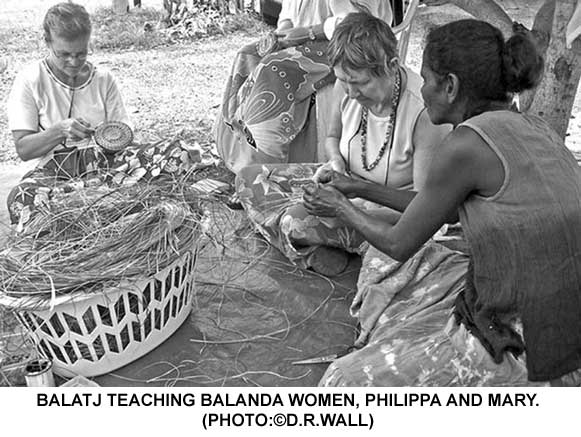
‘Two way learning’ evolved from a bi-lingual education program that resulted from the Australian Federal Government’s policy shift from assimilation to integration in the early 1970s. The idea was to maintain distinct cultural practices within the framework of Australian multicultural society. Hence, the education department gave support to programs that taught children partly in their own language. As a result by the 1980s, Yirrkala school had a number of tertiary trained Indigenous teachers. Mandawuy Yunupingu became the first Aboriginal principal in Australia at Yirrkala School in 1990. He introduced the first bi-cultural curriculum in an Australian school and founded the internationally acclaimed band Yothu Yindi in 1986. With ‘two way learning’, however, being taught in Yol\u language is just one aspect of it. ‘Two way learning’ means the curriculum itself incorporates Yol\u knowledge, (1) enabling both teachers and pupils to have the opportunity to compare the similarities and differences between Western and Yol\u systems of knowledge. This provides a broader cultural context for learning and problem solving.
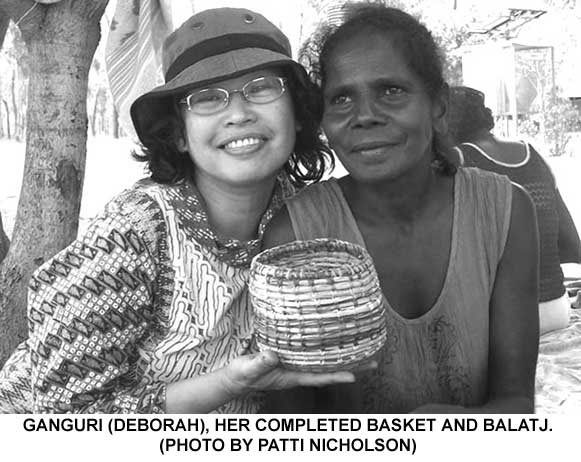
At a deeper level, their bark paintings are not just art for art’s sake. The Saltwater paintings which were exhibited at the National Maritime Museum in Sydney were used as a medium for transmitting Yol\u knowledge - their kinship, clan boundaries, marine landscape, animals, trees, Ancestral spirits - a worldview that is interconnected, interrelated and holistic. In fact, Yol\u used paintings in their land rights case. The bark petition was indeed critical in their struggle and successful campaign for land rights vested in traditional owners and their descendants. When in 1997, they discovered that the Northern Territory Land Rights Act did not give them rights over the sea, they produced a series of bark paintings to show ancestral rom (Law) associated with the clans along the full length of their sea coast.
The Ganambarr family hope that one day, they will be able to set up a Homeland School for their children in Nyinyikay. They believe that a Homeland School will provide a solid foundation for maintaining their culture and tradition, and with ‘two-way learning’, the pupils will be prepared to have further education in town, if they show promise. Ironic as it may seem, our visit is intended to help preserve that tradition. We are now spreading the word: Nyinyikay will offer small-scale indigenous tourism with a difference - where visitors will receive a meaningful cultural education through experiencing life with the Ganambarr family. Through this venture, the family’s dream of establishing a Homeland School may be within reach. All these activities will help Balanda understand Yol\u culture. For me, this kind of cultural sharing shows how privileged we are to be associated with one of the oldest surviving cultures in the world.
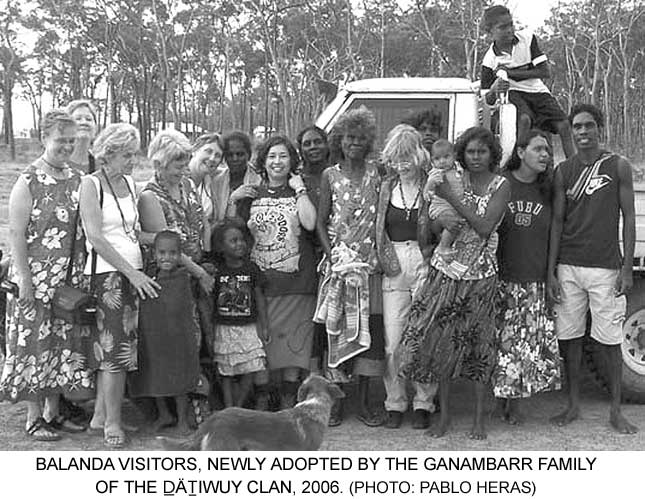
References:
Further Reading:
 Home | Aims and Objectives of Solidarity Philippines Australia Network | About Kasama
Home | Aims and Objectives of Solidarity Philippines Australia Network | About Kasama 
Search the SPAN Web